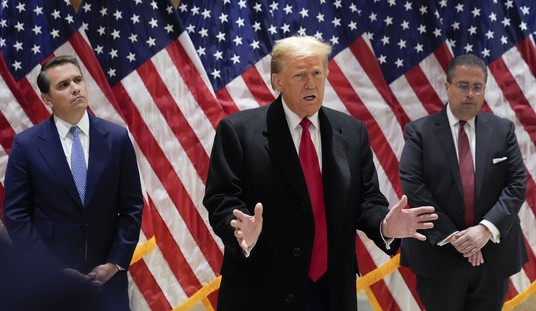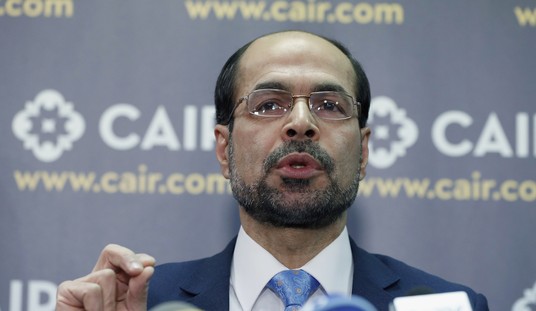A Manhattan courthouse is facing backlash on social media for erecting a temporary eight-foot golden statue that critics argue looks like a “demonic” abortion idol.
Near Moses, Confucius and Zoroaster stands a new female sculpture with hair braided into horns, snake-like arms, and a collar à la former Supreme Court Justice Ruth Bader Ginsburg.
The artist, Shahzia Sikander, named the figure “NOW,” which she says could function “as a site of resistance” after the Supreme Court overturned Roe v. Wade in June.
“With Ginsburg’s death and the reversal of Roe, there was a setback to women’s constitutional progress,” she said in her artist’s statement about the piece.
A similar, 18-foot sculpture called “Witness” stands in the adjacent Madison Square Park.
NOW, an 8-foot sculpture on the roof of the courthouse, uses the same feminine form as in Witness, but instead of the skirt raising the body, the body emerges out of the seat of a lotus. The lotus, with its plethora of meanings and abstract ideas, is symbolic of a deeper truth beyond its form, alluding to perception as illusion. Popular in images in many cultures, it also expresses intangible ideas of humility, awakening, and clarity. The invisible roots of the lotus that lie below the depth of the water are echoed in the roots of the feminine figure. Its form, a circular bloom, with its petals within petals formation, refers to the microcosm and macrocosm in its arabesque, iconographical value. The female body has a face with its hair braided into spiraling ‘horns.’ The horns mimic the movement of the arms and are there as a symbol of the figure’s sovereignty, and its autonomy. Women in my work are always complex, proactive, confident, intelligent and in their playful stances connected to the past in imaginative ways without being tied to a heteronormative lineage or conventional representations of diaspora and nation.
Femininity to me is the tension between women and power. How society perceives such a dynamic and how erasure is enacted by the social forces that shape women’s lives. Throughout literature, the notion of the female has been in conversation with the visible /invisible divide, the feminine as the monstrous, the abject, the fecund, the immense, and the vulnerable. Intimacy, selfhood, valor, resistance, and femininity’s intersections with race and war are markers of the fear that lurks when boundaries melt.
The recent focus on reproductive rights in the US after the Supreme Court overturned the landmark 1973 decision that guaranteed the constitutional right to abortion in the US, comes to the forefront. In the process, it is the dismissal, too, of the indefatigable spirit of the women, who have been collectively fighting for their right to their own bodies over generations.However, the enduring power lies with the people who step into and remain in the fight for equality. That spirit and grit is what I want to capture in both the sculptures. (Shahzia Sikander)
Recommended
The statue is drawing criticism on Twitter.
Was there any public input whatsoever before a satanic golden medusa demon with tentacle arms was installed atop a downtown courthouse?
— Councilwoman Vickie Paladino (@VickieforNYC) January 26, 2023
Who thinks this is okay? And how do we go about removing it? https://t.co/qS0KlwgHVb
NYC Courthouse has put up a gold horned “goddess” statue to symbolize resistance & abortion rights. It literally looks like a demon. America loves celebrating death. https://t.co/R3lAVge8Co
— Amanda Ensing (@AmandaEnsing) January 26, 2023
NYC just put this statue atop a courthouse.
— Fr. Alex (@AlexOlszewski) January 26, 2023
It represents resistance to the overturning of Roe v. Wade. Notice the RBG collar.
It looks like something Indiana Jones found in a secret chamber beneath an ancient Babylonian temple. The only thing missing is glowing red eyes. pic.twitter.com/dc32vgR4uX

























Join the conversation as a VIP Member